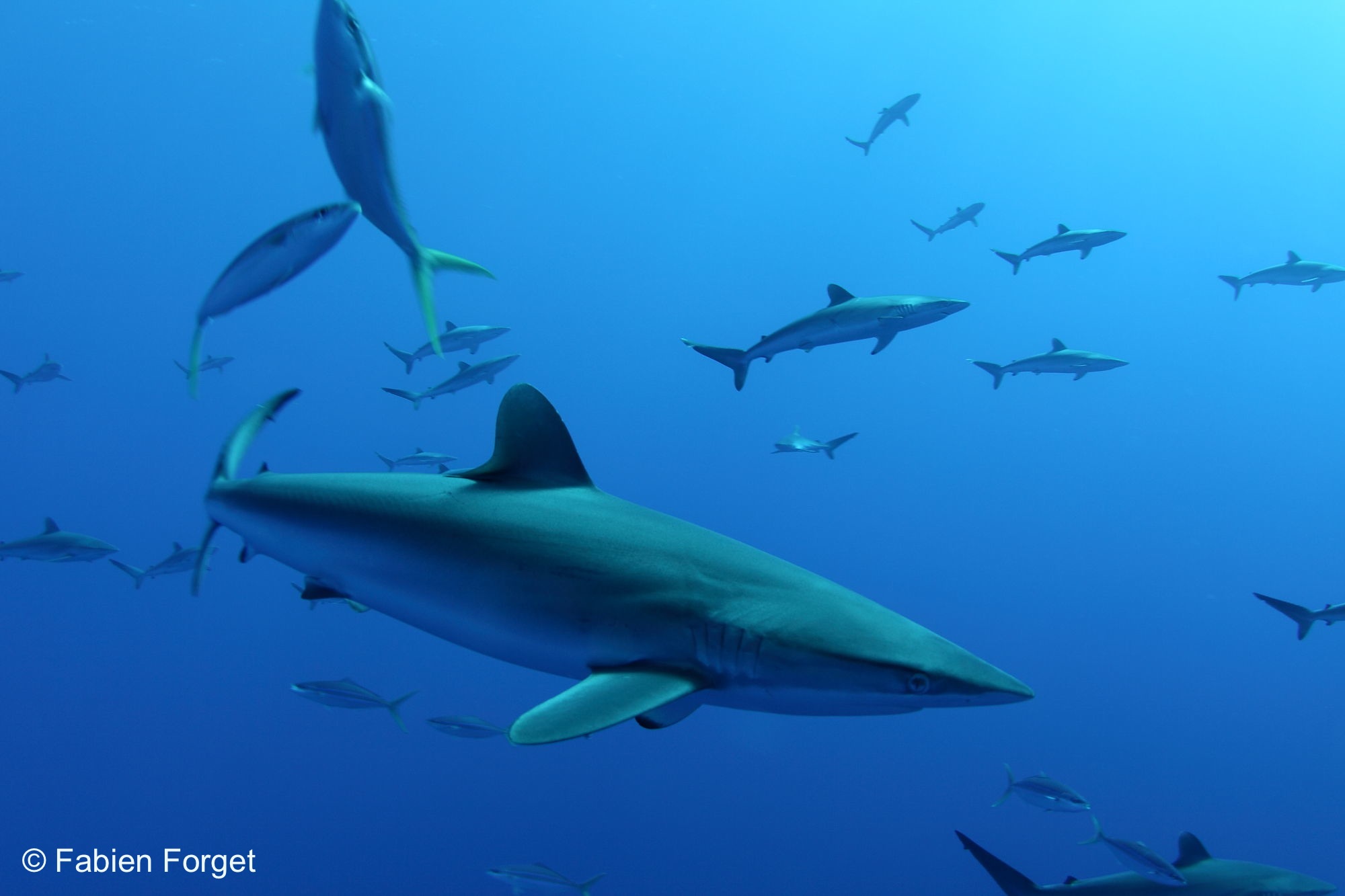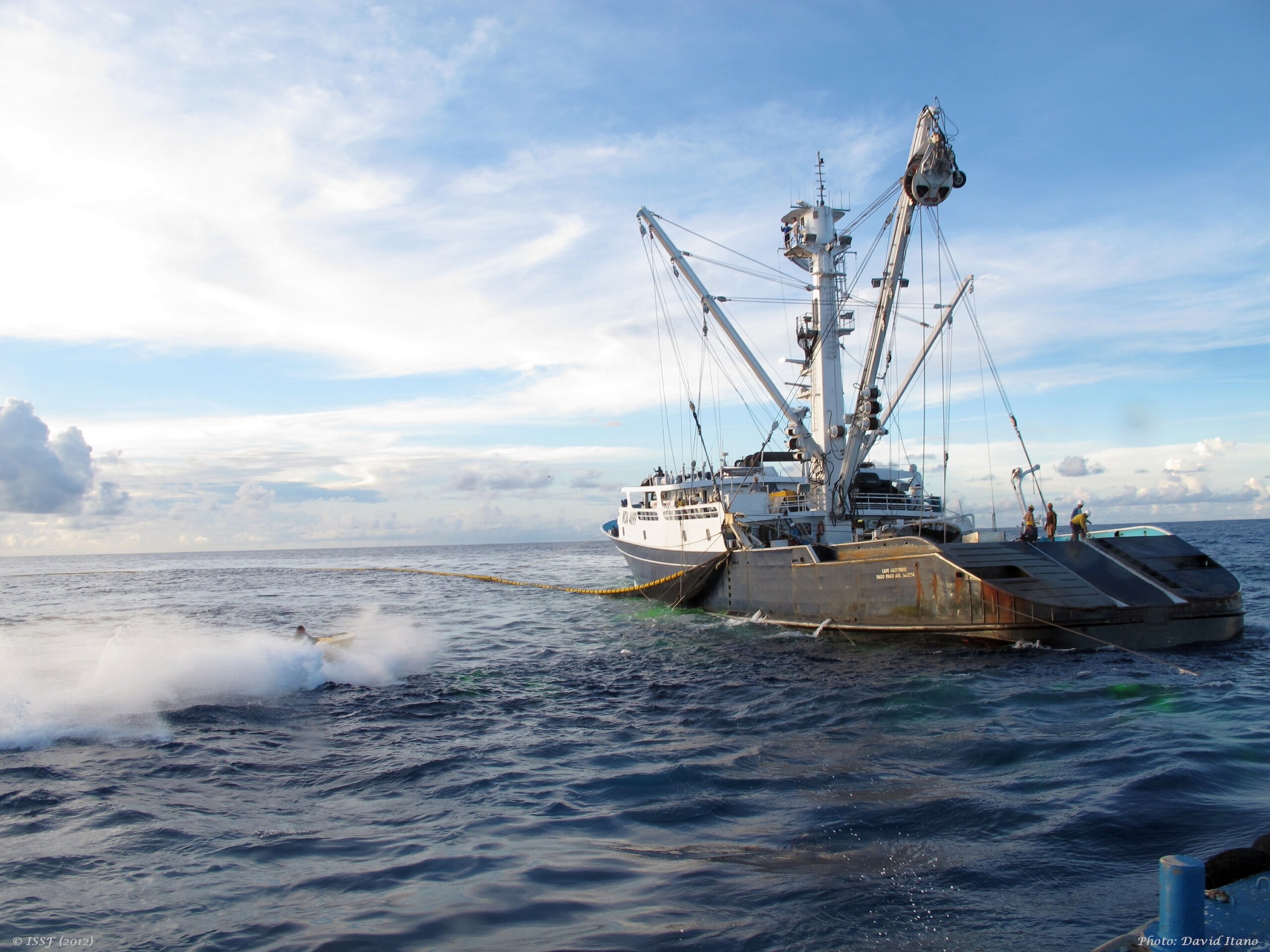
Pacific Ocean Tuna Fisheries Managers Adopt Critically Needed Harvest Strategy and Strengthened Shark Protections
The Western and Central Pacific Fisheries Commission (WCPFC) recently wrapped its annual meeting — its first in-person annual meeting since 2019 and one with important stakes for tuna stocks in the region. The meeting brought good outcomes for Pacific tuna fisheries, most notably the adoption of a harvest strategy (or management procedure) for skipjack tuna and stronger protections for sharks.
The ISSF position statement outlined these priority topics and others for the Commission in 2022. Here is a review of the outcomes of the WCPFC meeting against our organization’s asks.
Harvest Strategies
ISSF and partners have been consistently pressing for the accelerated adoption of harvest strategies for tunas across regional fisheries management organizations (RFMOs). Harvest strategies — which include target and limit reference points together with harvest control rules — provide pre-agreed rules for managing fisheries resources, prescribing action in response to stock status changes. They are crucial for the long term, sustainable management of tuna fisheries.
The need for action at the WCPFC this year was particularly urgent. Fisheries managers had to adopt this management method to meet a 2023 Marine Stewardship Council (MSC) deadline for harvest strategy conditions. They otherwise risked running out of time to complete a requirement under the MSC Standard — specifically, introducing catch or effort constraints to ensure the harvest strategy is applied in practice.
We pressed for the adoption of comprehensive harvest strategies for Western Pacific skipjack and Northern albacore, including harvest control rules. And we are gratified that the Commission answered these appeals, especially with an adopted management procedure for skipjack. A harvest strategy for Northern albacore was also adopted. These actions show that the WCPFC has embraced harvest strategies as part of its management toolbox, which will have a positive impact on the management of other WCPO tuna stocks.
Fish Aggregating Device (FAD) Management
FAD management consistently tops ISSF’s appeals to tuna RFMOs. Without rigorous management in place, FADs can have negative impacts on the marine environment.
This year, WCPFC adopted a definition of biodegradable FADs and categories of biodegradable FADs, measures that are now consistent with those of one of its peer RFMOs, the Inter-American Tropical Tuna Commission (IATTC), and help pave the way for more harmonized regulation and use of improved FAD designs across global tuna fisheries. These items led our FAD-focused asks, and we welcome their adoption.
We called for progress on other FAD management needs, too, such as the adoption of a FAD marking scheme; FAD ownership rules; rules for activation and deactivation of FAD buoys; a FAD-recovery policy and incentives; a clear transition timeline to using FADs made largely of biodegradable materials; and requiring vessels to report near-time FAD position and acoustic data. Measures on these items were not approved. But we are hopeful that the Commission’s FAD Working Group will tackle them under their updated work plan for 2023.
Protections for Sharks
Our position statement emphasized that WCPFC needs to improve efforts to mitigate bycatch of vulnerable species in purse seine and longline fisheries. Strengthened management measures for sharks are especially needed because several WCPO shark stocks are seriously depleted and the relevant WCPFC measure contained loopholes.
We are pleased that a top request in this area was adopted: the Commission will prohibit the use of branchlines of wire trace and shark lines between 20N and 20S as of January 1, 2024. This action heeds WCPFC Scientific Committee advice. It will help reduce fishing mortality on overfished oceanic whitetip and silky sharks.
At-Sea Transshipment Management
If not well-managed, transshipment at-sea can be a conduit for illegal, unreported, and unregulated (IUU) fish to enter the supply chain. Fortunately, the Commission addressed a persistent gap in data collection for Pacific tuna fisheries this year: WCPFC adopted minimum standard data fields to be collected by observers during transshipment events. ISSF applauds this progress; however, much more action is needed.
We will continue to urge the transshipment working group to progress its workplan in 2023 to develop clear recommendations to reform the regulation of transshipment at-sea next year.
Electronic Monitoring (EM)
Despite good progress made, ISSF is very disappointed that the WCPFC has not made more progress to advance electronic monitoring (EM). Comprehensive observer coverage through an EM program is critical to effective fisheries management; compliance monitoring; and independent verification of catch, effort, and marine species interactions. The value of this tool became especially clear when the global pandemic limited the ability to place human observers on fishing vessels — a point ISSF and partners repeatedly highlighted in our RFMO appeals.
ISSF has been calling for the adoption of a conservation measure for an EM program and minimum standards for the use of EM in WCPO fisheries. The Commission did not agree to such measures; they must do much more to advance this critical issue in 2023.
This year’s WCPFC annual meeting was a productive one overall, with a good spirit of cooperation among parties. After two years of remote meetings forced by a global pandemic, we were grateful to meet our colleagues in person again. We are hopeful that this collaborative approach continues into 2023 as we continue our work for the sustainable use of the world’s largest tuna fishing grounds and protections for the broader marine ecosystem.


